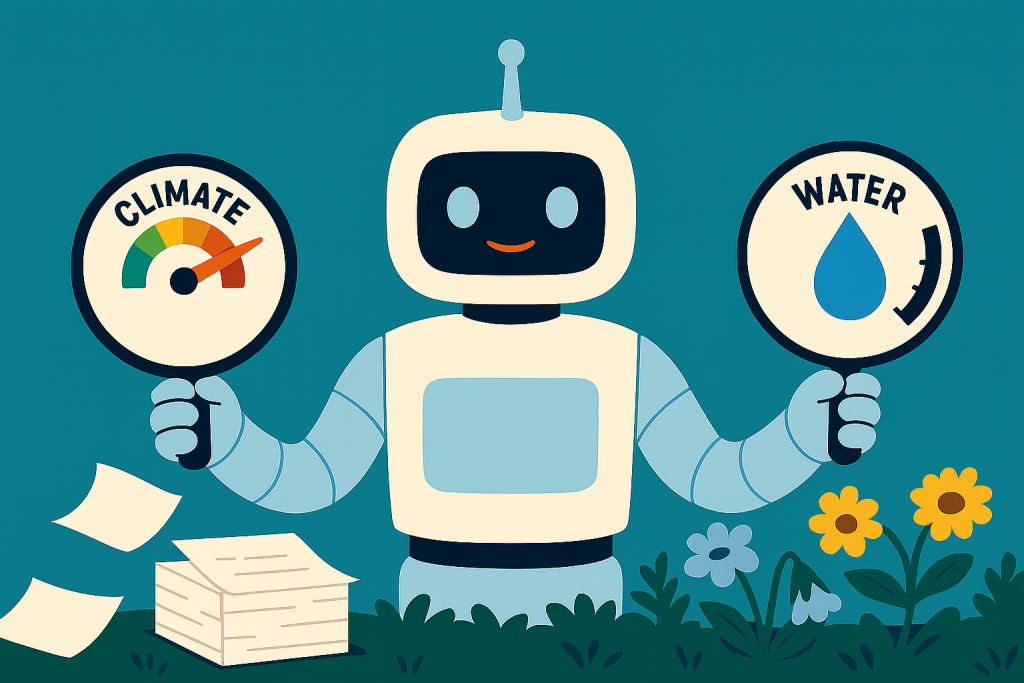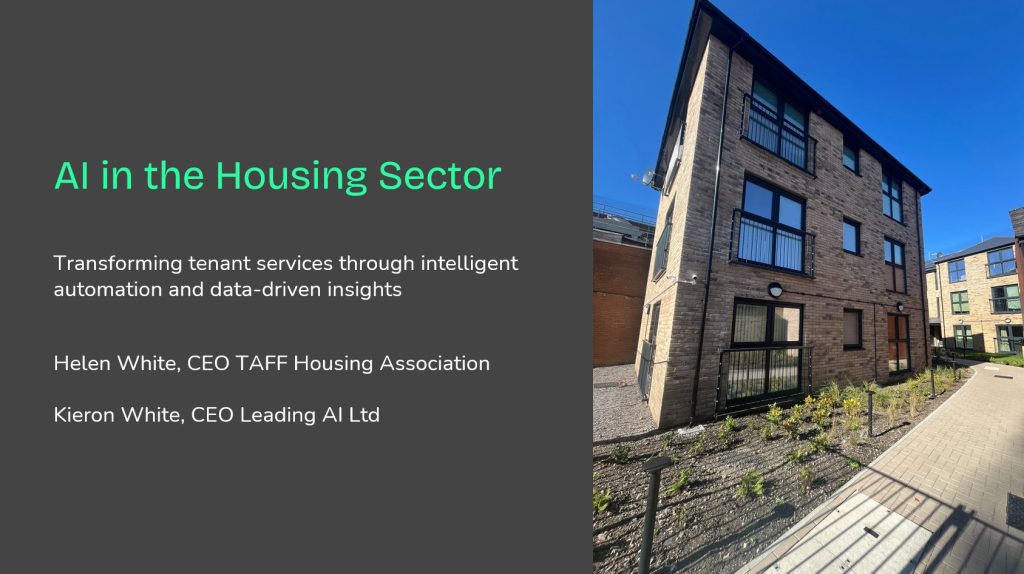
As AI use grows, so does its environmental impact — from energy-hungry prompts to overflowing data storage. Thoughtful, right-sized choices can help keep the magic without the waste.
When netizens first realised that the latest release of ChatGPT could turn any image into something eerily like a beautiful Studio Ghibli-style still, loads of us gave it a go. I did. And then everyone did it again. And again. Even after we’d seen a dozen mossy cottages and wistful-eyed children on windy hillsides, everyone kept clicking. The AI-generated images kept coming.
There’s nothing wrong with experimenting — it’s how we learn. But it’s also a small, harmless-looking example of a bigger pattern: we often use more AI than we need, probably because it’s sometimes delightful, usually easy, and… we can. Multiply that across millions of users and billions of prompts, and the environmental costs begin to stack up.
Sustainability questions are mounting every time AI use is debated — and it’s quickly becoming the question in every AI teach-in we run.
In this update to our November 2024 blog, we’re looking harder at what we can control: how we use AI, how we store data, and how we right-size our tech choices to fit the task at hand.
AI’s footprint is growing — and increasingly, that’s on us
By now, you’ve probably seen the headlines: AI is driving a surge in demand for data centres. The International Energy Agency — and it’s fair to say those folks know what they’re talking about — estimates that by 2030, global data centres could consume twice as much electricity as they do today. In the US alone, where adoption is accelerating fastest, AI could account for as much as half of all new electricity demand this decade.
Water use is rising too. In 2023, researchers estimated that training GPT-3 alone required over 700,000 litres of fresh water. And by 2027, depending on location and cooling systems, AI water consumption could exceed the annual total of some smaller countries.
You’ve probably already moved your organisation from clunky on-prem servers to cloud infrastructure — and quite right too. That shift brings real efficiencies. But the “cloud” still lives in physical data centres, and the scale of what they handle means the heat generated and water used to cool them are serious environmental considerations.
The catch? A lot of that demand isn’t from training new models — or, as the tone of some questions tends to assume, from the existence of large language models and image generators. It’s coming from us. From the prompts we run, the agents we trigger, the chatbots, the slide-makers — and yes, from making those Ghibli-style images long after the novelty wore off.
Think about what you’re storing — and duplicating
That Ghibli image you made? It’s on your phone. Also in the cloud. And copied again each time you share it. OpenAI likely has a version too — including the prompt you used, the cheerful response it gave, and all the metadata that travels with it.
Because it was so quick and satisfying to create, you probably did it five more times than you would have using more traditional (read: 2021) tools.
Many of our customers work in education, and — rightly, and somewhat endearingly — get challenged by the young people they teach on how sustainable AI really is. It’s exactly the right question, and we hope they keep asking it.
Here’s what we tell everyone:
1. Use tech that fits the task
Not everything needs the power of GPT-4. A huge number of everyday tasks — like drafting emails, summarising notes, or rewording a sentence — can be handled by smaller, faster, more energy-efficient models. Or by swapping out a system-wide integration for something bespoke, private, and limited to your cloud and a handful of reference documents.*
Some organisations have shown that switching to task-specific or distilled models can reduce energy consumption by 50–80%. And it’s not just about emissions: efficient models are cheaper, faster, and often less prone to hallucinations because they’re tuned for a narrower range of tasks.
So why are we still calling on the big guns for everything? Habit, probably. Or default settings. Or the slightly irrational belief that “more powerful” always means “better” — even when the job is simple.
Apply the same logic you would to anything else that uses energy: don’t use full-spectrum lights designed for hydroponics to light your conservatory, unless you’re growing something (ahem) other than a few aspidistras. Don’t nip to the shops in a Hummer.
2. Declutter your digital world
Data storage has become frictionless. We keep everything — version histories, voice notes, endless prompt logs — and tell ourselves it doesn’t matter. But it really does.
Storing and reprocessing data consumes energy every time it’s accessed or used to generate new outputs. Some researchers now advocate for “data hygiene” as a climate action — deleting what’s no longer needed, compressing what is, and being honest about what’s actually useful.
In practical terms:
• Delete stale prompts, logs, and draft outputs after 30 days (or in line with your organisation’s policies).
• Avoid exporting every AI-generated output to a PDF or slide deck unless you’re genuinely going to use it.
• Choose tools with adjustable retention policies or automatic archiving.
Data management is boring (to me, at least) — but powerful. Think of it like turning off the lights when you leave the room.
3. Prompt with care
Not all prompts are equal. A recent Time investigation found that some AI prompts generate up to 50× more emissions than others — usually because they require longer processing, complex chained reasoning, or unnecessarily high-resolution images or long-form outputs.
Asking your chatbot to act like an award-winning novelist and also a senior data scientist and also invent a new methodology for impact evaluation — and present it visually can be fun. But do you need it?
Being clearer and more concise doesn’t just improve your output — it lowers compute usage. It’s good prompting and good climate practice.
In other words, have a little word with yourself.
4. Choose providers who publish the right data
There’s no perfect AI provider. But some are more transparent than others.
• Google has pledged to operate carbon-free data centres by 2030 and has cut emissions in some areas by upgrading hardware.
• Anthropic publishes energy use data even for its smaller models.
• Perplexity, whose tools I use a lot, reports energy use per query (~0.0005 kWh) and is actively developing low-carbon inference strategies. It’s the closest thing to a home smart meter for AI.
If your provider doesn’t publish environmental data — or can’t answer basic questions about power sourcing and cooling — ask them why.
5. Use AI where it really adds value
This might sound like sales nonsense, but it’s not: when deployed thoughtfully, AI can reduce environmental harm. It can optimise delivery routes, improve building energy use, cut waste, enhance conservation efforts — or just save human time and effort.
It can also — more obviously — help you replace three days of work, stress, energy use, and late-night Deliveroos with one hour of smart, focused output. (Have you tried our Bidwriter? Shameless plug #2. I’m not sorry.)
Offsetting promises can be slippery, and humans are prone to optimism bias — but always ask: what am I displacing when I take the AI route?
So don’t feel guilty about using AI — just make it count.
And maybe be honest about the standards you’re holding AI to. Were you this conscious about impact every time you used Google? Or when you ordered that burger?
(That burger, by the way, used about 2,500 litres of water to reach your plate. Before you object: yes, serious foodies will rightly say we need to factor in water sourcing, recycling, and sustainable farming practices. But the same nuance should apply to tech.)
In summary: the Ghibli test
If you’re wondering whether to hit that button again, try this:
Will I learn something from this, or save more time and effort than I would another way?
If not, maybe it’s time to close the tab and walk the dog.
The environmental footprint of AI is still lower than many industries, and lots of scary-sounding stats lack context. But as AI use scales — especially in always-on business tools — the cumulative impact matters. And your choices matter too.
Right-size your tech. Be picky with your prompts. Let go of what you don’t need.
That’s how we keep AI powerful and sustainable.
* (Yes, that was a shameless plug for a Leading AI assistant. The first of two in this blog. Still not sorry.)
Latest posts

AI, and how to make sense of the UK Government’s Budget announcement, without resorting to reading it
News

KnowledgeFlow in the Housing Sector with Helen White, CEO Taff Housing Association
Webinars

